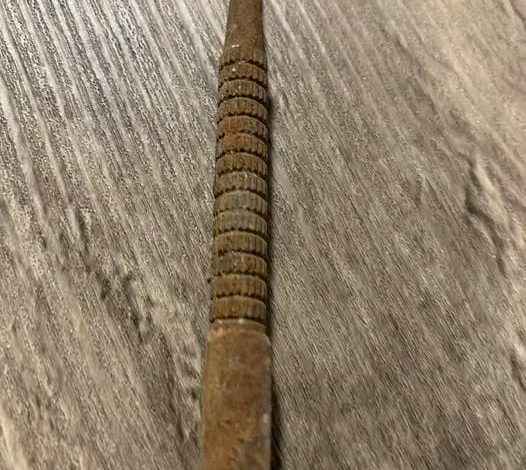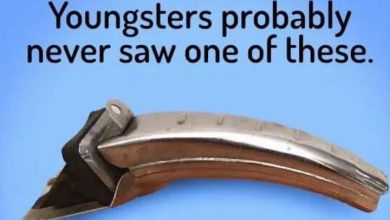Unearthing Artistry: The Timeless Tale of a Sculptor’s Tool

ADVERTISEMENT
Unearthing Artistry: The Timeless Tale of a Sculptor’s Tool
Introduction:
Amidst the pantheon of tools that have shaped human civilization, some hold stories not just of utility but of creativity and cultural expression. The object in the image—a weathered and rusted sculpting tool—serves as a testament to the enduring dialogue between artists and their materials. This article delves into the historical significance, usage, and symbolic value of such tools in the realm of sculpting.
Body: Historical Significance: Sculpting tools have been instrumental in art since ancient times, used by civilizations from the Greeks to the Renaissance and beyond to shape materials as varied as marble, clay, and wood. Tools similar to the one shown in the image have been used for detailing, shaping, and finishing, providing artists with the means to bring their visions to life. The wear and rust evident on the tool suggest its extensive use, hinting at a long service life possibly spanning several decades or even generations.
Technical Specifications and Usage: Typically, a sculptor’s tool like the one pictured is crafted from durable metal, designed to withstand the rigors of manipulating hard materials. The pointed end indicates its use in fine detailing work, perhaps in adding textures or refining small features on a sculpture. Over time, such tools can become almost like extensions of the artists themselves, each wear mark and stain telling a story of countless hours of labor and moments of inspired creativity.
ADVERTISEMENT
Symbolic Value: Beyond their practical applications, tools like these are imbued with symbolic meaning. They represent the human impulse to create and the intimate relationship between the creator and the medium. In many ways, these tools are silent witnesses to the evolution of artistic styles and techniques, and they embody the dedication required to master the art of sculpting.
Preservation and Appreciation: As artifacts, old sculpting tools are cherished not only by artists but by historians and collectors as well. They are often featured in museum collections related to both art and technology, celebrated for their craftsmanship and the stories they hold. Preserving these tools involves battling corrosion and ensuring they are stored in conditions that do not exacerbate their aging, a testament to the respect and reverence they command.
Conclusion: The sculpting tool captured in the image is more than just a piece of metal; it is a relic of the artistic process, a fragment of the human story. In recognizing and preserving such tools, we acknowledge the depth of our cultural heritage and the unseen labor behind the artworks we admire. These tools remind us of the physical and mental craftsmanship that has shaped beauty and expression throughout history, encouraging a deeper appreciation for both the art and the artist.
This exploration invites us to consider not only the visible products of artistic endeavor—the sculptures and statues that adorn our spaces—but also the essential, often overlooked instruments that make such art possible. Through such tools, we touch the hands of the past, connecting with the timeless human pursuit of creation and expression.
ADVERTISEMENT




